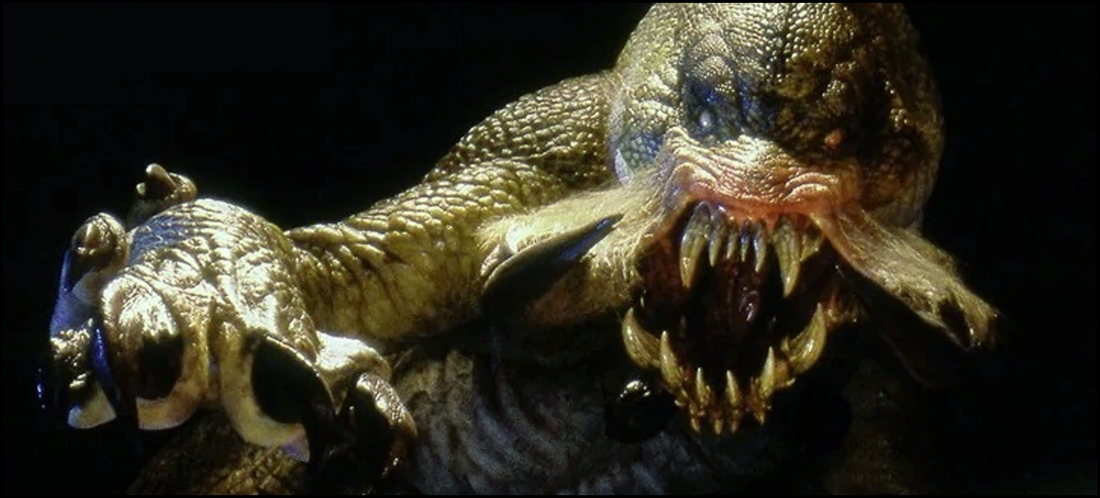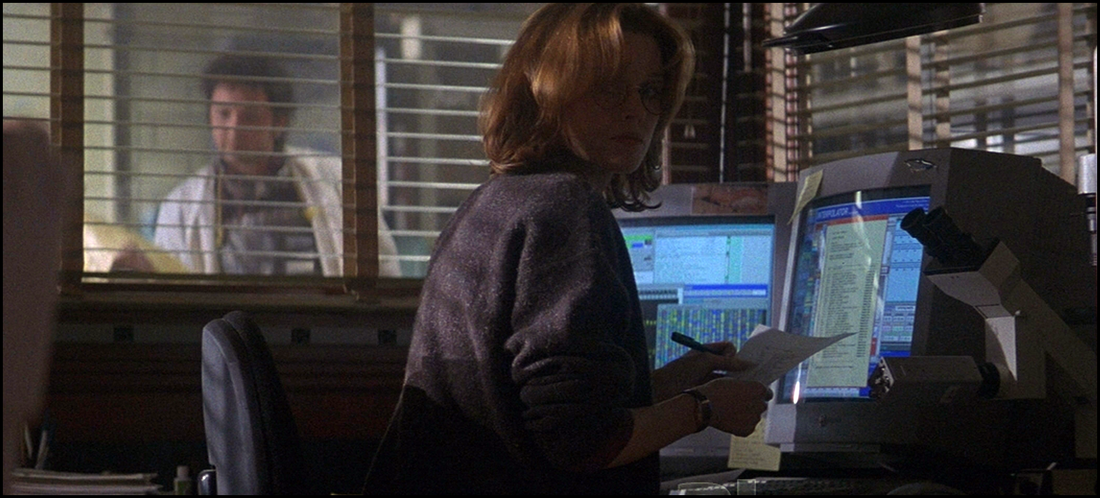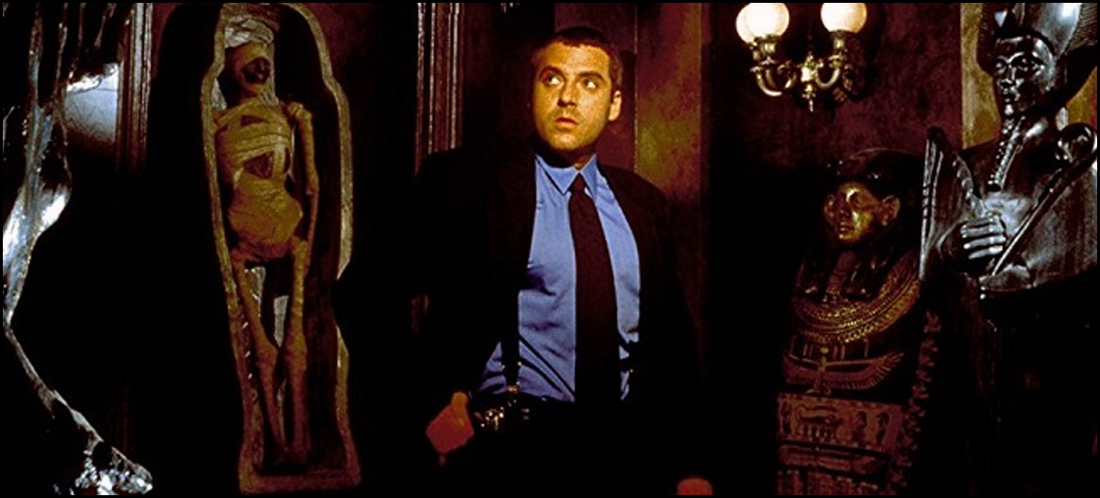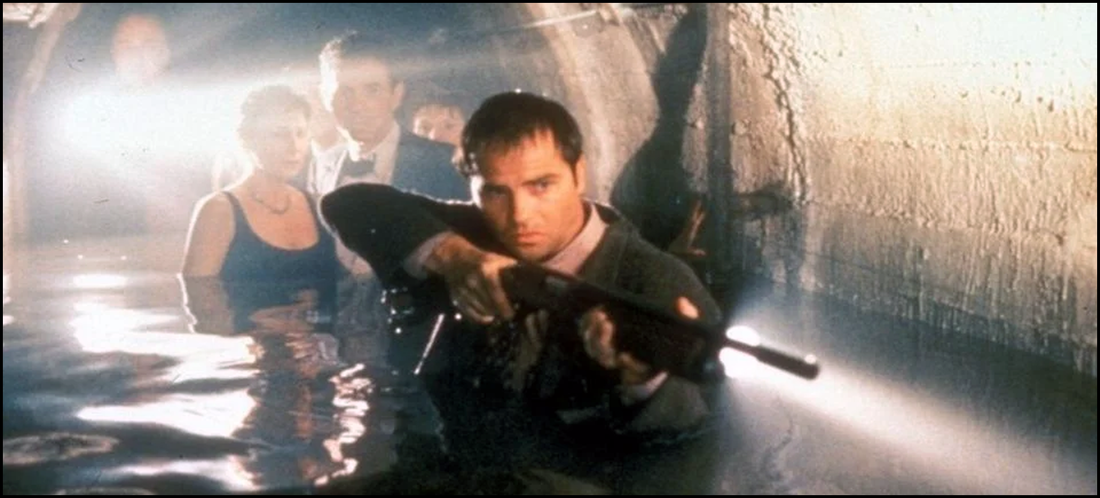PROGRAMMING NOTE
From the film’s IMDB.com citation:
“A homicide detective and an anthropologist try to destroy a South American lizard-like god, who’s on a people eating rampage in a Chicago museum.”
Well. Welcome to the Windy City, my friends.
I do remember seeing Peter Hyams’ The Relic in cinemas, and I do distinctly remember not being all that enamored with the end results. As is often the case, the film still has bits and pieces I enjoy – along with some stuff that I think weighed it down unnecessarily – making it a mixed bag of highs and lows that never quite congealed the way a good scare should. Seems to me (at the time), I dubbed it a fairly routine monster movie with the sole exception that I didn’t feel all that sorry for the monster. (I do like giving them a bit of empathy. So sue me.)
Hyams was no stranger to Science Fiction and Fantasy at the time, already having features like Capricorn One (1977), Outland (1981), 2010: The Year We Make Contact (1984), Stay Tuned (1992), and Timecop (1994) under his belt. Interestingly enough, he’s also credited with penning the script for Outland, an impressive but slow-moving flick that enjoyed a ‘Best Writing’ nomination from the Academy of Science Fiction, Fantasy, and Horror Films. (Outland was also nominated for a 1982 Hugo Award.) Hyams also adapted Arthur C. Clarke’s 2010 to the silver screen, and that motion picture brought home the bacon – well, the trophy – from the 1985 Hugo Awards for ‘Best Dramatic Presentation.’
Adapted from a novel by Douglas Preston and Lincoln Child, the script appears to have passed through several pairs of hands to get it into shootable condition. If I’m understanding all the creditable mechanics properly, Amy Holden Jones (her only pure genre project) penned the first draft, one that was further attended to by John Raffo (no SciFi or Fantasy to his name other than this). Their work was then handed off to screenwriting partners Rick Jaffa and Amanda Silver, a married couple who’ve since reappeared on the genre scenes with scripts for Rise Of The Planet Of The Apes (2011), Dawn Of The Planet Of The Apes (2014), and Jurassic World (2015).
Still – as I said above – at its heart The Relic is the classic monster movie given a contemporary locked box setting, that of the Field Museum of Natural History in Chicago.
Housing all of this within a museum is a curious choice, indeed. Museums are not regularly thought of as places for scaring one silly. From my experience, they tend to be rather dry and quiet environments. While often scenic, they don’t exactly have – open to the public – rooms and corridors one might associate with frenetic action or blood-curdling chills; but what The Relic proposes is that – behind-the-scenes – this grand old structure has even plenty of space that could be exploited for its thrills and chills, even blessing it with a subterranean level leading to city infrastructure just perfect for a creature-in-hiding to build its den.
All of that is well and good. Having never been backstage at any museum, I’ve no way of knowing the extent of its rooms and storehouses. But what Hyams’ depicts rather casually here ends up seeming like an OSHA nightmare. Offices and workrooms are so poorly lit that I can’t imagine anyone willing to stay gainfully employed in that space for too long a time; while its easy to dismiss boiler rooms and security offices as having dim spotlights, The Relic’s quarters look more like they were pulled out of some 1940’s noir film sets as opposed to a place where people actually punch a clock for a living. Granted, I can accept some suspension of disbelief – Hyams was likely trying to set the proper mood for his monster movie – but the technique used here strains credibility. Much of the film is just entirely too dark.
Stars Penelope Ann Miller and Tom Sizemore deserve credit much of the credit for bringing the dark to light here.
Sizemore – an incredible busy actor whose career is fast approaching three hundred different screen projects on IMDB.com – has always had this blue-collar appeal for me. While he might play characters of authority – here, he’s the Chicago homicide detective working against the city system to get things under control – I’ve never seen him as someone who kowtows his way through life. The folks he embodies seem like the common man, so casting him here as the understated voice of normalcy (who just happens to have a superstitious streak) strengthens the picture. His is a voice that’s easy to root for, and while it’s a bit sad that his ‘Lt. Vincent D’Agosta’ ends up being locked out of the finale (pun intended) it’s great that he and Miller are given a happy closing reunion.
I’d be remiss as a genre geek if I failed to also highlight the involvement of actor Clayton Rohner, another personal favorite of mine who deserved some greater attention. He first caught my eye with his work in an episode of Star Trek: The Next Generation (“Too Short A Season”), and I’ve watched for him ever since. He turned up in a stellar Fantasy series, Good Vs Evil (1999-2000), that truly deserved a wider audience than it earned; and fans might recognize him from any number of visits to such franchises as The X-Files, Angel, Jake 2.0, Dollhouse, and Stitchers. In The Relic, his ‘Detective Hollingsworth’ is essentially Sizemore’s partner; and he delivers a great workmanlike performance leading folks to safety.
Stan Winston designed the film’s creature – a bit of a chimera for reasons that tie into the plot – and it works on every conceivable level. Thankfully, there’s enough lighting in parts of the film’s second half that audiences to do to see it in all its wheezing glory; but a tighter script – one that didn’t have it moving from one side of the museum to the other so that it could be practically everywhere at once – might’ve made all of this a bit more believable. At one point, I’d begun to suspect that there were two of them; since that wasn’t the case, I stand by that observation. The film has the thing hunting survivors through the city sewers only what seems like seconds after falling through the museum roof moments ago; how the critter got so far so fast never gets explained, and that was a narrative hiccup in need of a remedy.
In retrospect, I suppose I’d conclude that I liked The Relic a bit more on this later viewing than I did on the first go’round. Some of that could be owed to my being a little older (and a little wiser), but I’d still insist that the film’s increasingly dark corners did it no favors with audiences of the day. Straining to identify exactly what it is one’s looking at isn’t the reason we go to the theaters to vicariously have the wits scared out of us, and just a bit more light on the subject may’ve given this chiller a bit more appeal.
-- EZ





 RSS Feed
RSS Feed